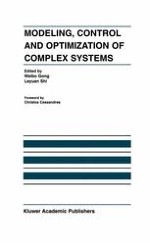Modeling, Control And Optimization Of Complex Systems is a collection of contributions from leading international researchers in the fields of dynamic systems, control theory, and modeling. These papers were presented at the Symposium on Modeling and Optimization of Complex Systems in honor of Larry Yu-Chi Ho in June 2001. They include exciting research topics such as:
-modeling of complex systems,
-power control in ad hoc wireless networks,
-adaptive control using multiple models,
-constrained control,
-linear quadratic control,
-discrete events,
-Markov decision processes and reinforcement learning,
-optimal control for discrete event and hybrid systems,
-optimal representation and visualization of multivariate data and functions in low-dimensional spaces.
